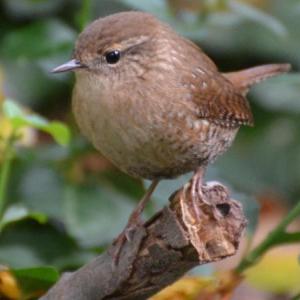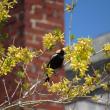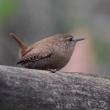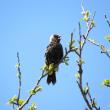Kristen Lindquist: Spring's avian virtuosos
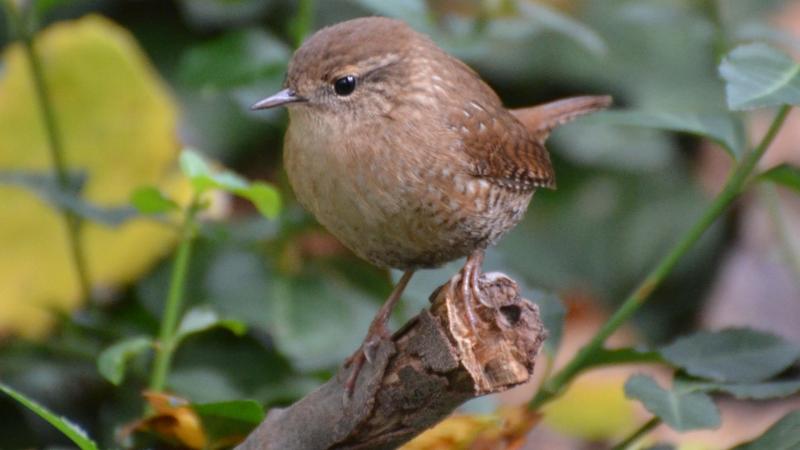 The Winter Wren is usually heard much more easily than seen. Photo courtesy Andy Reago & Chrissy McClarren
The Winter Wren is usually heard much more easily than seen. Photo courtesy Andy Reago & Chrissy McClarren
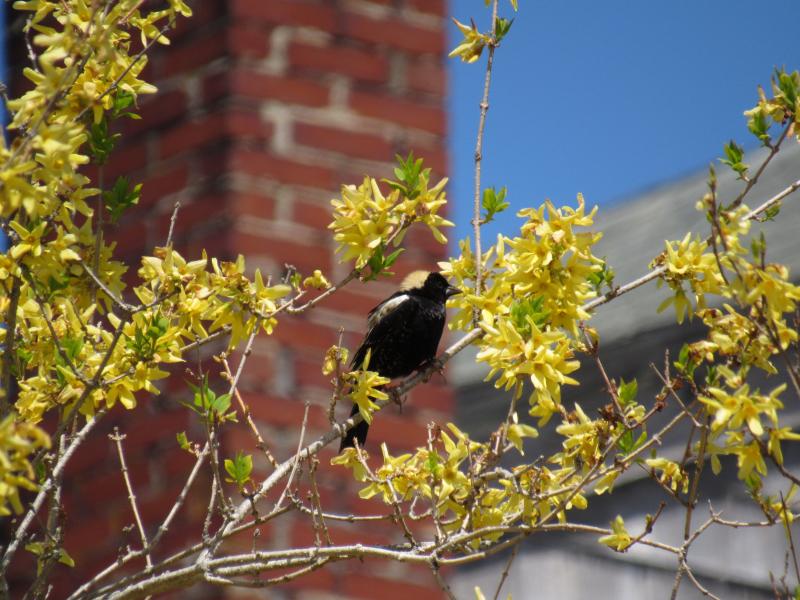 The Bobolink's song conveys the essence of spring energy. (Photo courtesy Kristen Lindquist)
The Bobolink's song conveys the essence of spring energy. (Photo courtesy Kristen Lindquist)
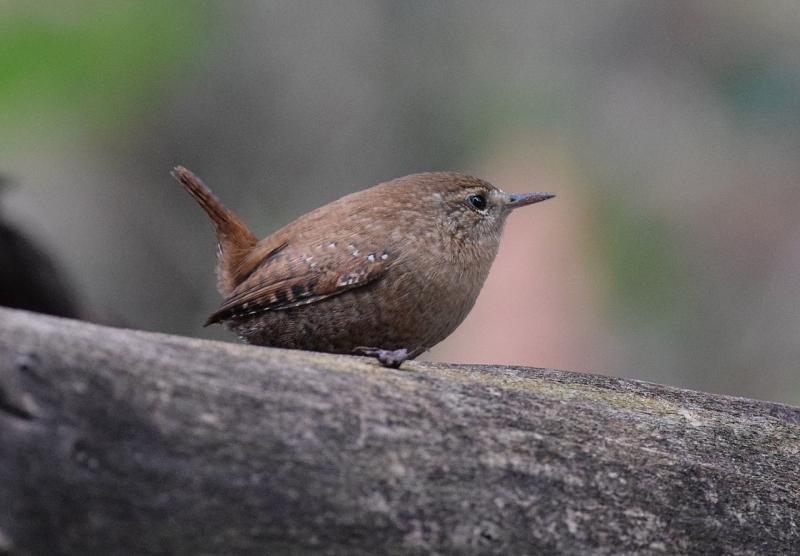 The Winter Wren's unassuming appearance belies its beautifully complex song. (Photo courtesy Andy Reago & Chrissy McClarren)
The Winter Wren's unassuming appearance belies its beautifully complex song. (Photo courtesy Andy Reago & Chrissy McClarren)
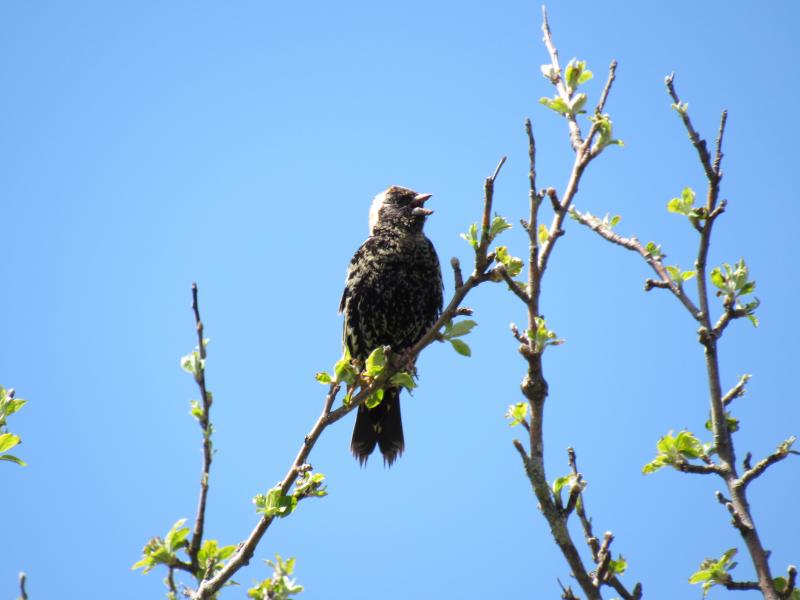 The boldly patterned Bobolink has been described as "the harlequin of birds." (Photo courtesy Kristen Lindquist)
The boldly patterned Bobolink has been described as "the harlequin of birds." (Photo courtesy Kristen Lindquist)
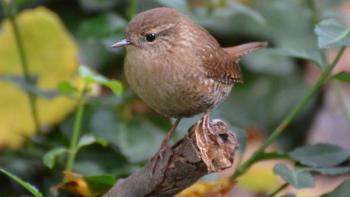 The Winter Wren is usually heard much more easily than seen. Photo courtesy Andy Reago & Chrissy McClarren
The Winter Wren is usually heard much more easily than seen. Photo courtesy Andy Reago & Chrissy McClarren
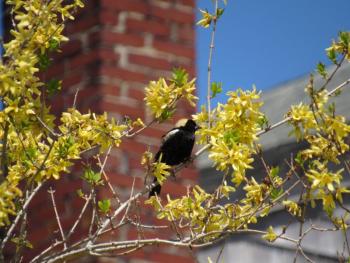 The Bobolink's song conveys the essence of spring energy. (Photo courtesy Kristen Lindquist)
The Bobolink's song conveys the essence of spring energy. (Photo courtesy Kristen Lindquist)
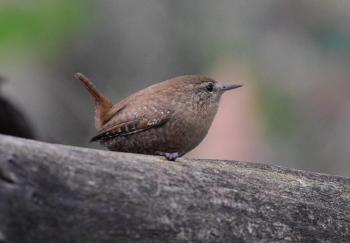 The Winter Wren's unassuming appearance belies its beautifully complex song. (Photo courtesy Andy Reago & Chrissy McClarren)
The Winter Wren's unassuming appearance belies its beautifully complex song. (Photo courtesy Andy Reago & Chrissy McClarren)
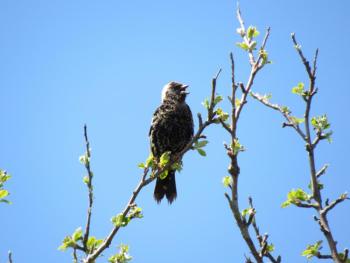 The boldly patterned Bobolink has been described as "the harlequin of birds." (Photo courtesy Kristen Lindquist)
The boldly patterned Bobolink has been described as "the harlequin of birds." (Photo courtesy Kristen Lindquist)
As the trees begin to leaf out, songbirds are slowly but surely returning. Waking in the morning to birdsong feels like the renewal of some kind of blessing. Even on a bleak and chilly day in May (with snow in the forecast!), the backyard arias of robins and catbirds help lift the spirits. In recent days my mood was elevated even higher by hearing two of my favorite bird songs for the first time this season: Winter Wren and Bobolink.
Neither of these birds is likely to show up in my Millville neighborhood. The Winter Wren prefers mature forest; the Bobolink likes big open fields. So they require some effort to find, but that effort is always a pleasure.
On Coastal Mountains Land Trust's Ducktrap River Preserve in Lincolnville, which I visit every May, I follow the trail to a ridge forested with mature pines and hemlocks. The ridge slopes down to the river, which rushes audibly below. And if you're lucky, you may also hear a sudden, bubbling eruption of song, a long emanation of trills and whistles that seems to flow like the water itself. The hush when the song ends feels like a held breath. And then it starts up again, a complex rush of notes that resonates through the forest for a full ten seconds or more. The song sounds so otherworldly, you can't imagine it arose from the throat of a mere bird. Thoughts of elves and tree spirits float through your head.
Tracking down this ethereal songster is no easy feat amid an understory crowded with tangled branches and dense thickets of young spruces and firs. Also, the bird is a bit of a ventriloquist. But if eventually you spot this virtuoso, with his head thrown back in full-throated song as he sings atop a moss-covered tree stump, you'll be surprised at how unassuming he looks. The Winter Wren is a plain little brown ball of a bird, smaller than a closed fist, with a short stubby tail often cocked straight up. Without his song, odds are that you wouldn't even notice this mouse-like bird. It doesn't seem possible that such a big, complex sound could be coming out of that tiny beak.
Thoreau described the Winter Wren's song, with great onomatopoeia, as a "fine cork-screw stream, issuing with incessant lisping tinkle from a cork, flowing rapidly," and declared that "the song harmonizes well with the sound of babbling brooks heard in the wild mountain glens and ravines where so often the bird breeds."
It may seem as if the wren's serenade is meant as accompaniment to the river itself, he's actually singing for more prosaic purposes: to alert other male wrens that this is his territory, and to let female wrens know that not only is he available, but he's built some nice nests for them to check out. Biology professor and author Bernd Heinrich reports that he often finds their nests in upturned tree roots.
Where the Winter Wren is a subtle and hard-to-spot little bird, the Bobolink puts himself right out there. No creeping through the underbrush for him. For one thing, the male Bobolink sports some flashy breeding plumage: he's black with bold streaks of white above and a big gold hood on the back of his head. He looks like nothing else.
And it won't take you long to spot this musical performer, either. The other day I was scanning Weskeag Marsh, counting the newly arrived Great Blue Herons and Snowy Egrets that were wading in the pannes, when I heard a buzzy, tinkling jangle high overhead. I looked up just in time to see a Bobolink land in a nearby bush. He sang over and over from the top of the bush, jazzy, metallic sequences replete with squeaky chips and plinks, as if the Star Wars 'droid R2-D2 were serenading the marsh. Then he launched himself high into the air again, the notes pouring forth from above as if he'd worked himself into a state of musical ecstasy. For me, the song conveys the essence of spring's restless, vibrant energy.
Noted early-20th Century ornithologist Edward Howe Forbush said of the Bobolink: "His spirits are of the effervescent kind, and his music bubbles irrepressibly forth at such a rate that half a dozen notes seem crowding upon the heels of every one uttered... this harum-scarum expression of irrepressible joy... ranks among the finest music of the fields."
Like the wren, the Bobolink sings to stake a claim on his territory and entice a mate, of which he will probably have several. When the birds first arrive in spring, several males will hang out together in a bush and sing at the same time, a babbling cacophony of a chorus.
Bobolinks nest on the ground in large open spaces like hayfields. Because there are no ready tree branches to sing from in such habitat, grassland nesting birds like Bobolinks often take to the sky for their serenades. If you're walking through a field that hosts Bobolinks, you may be wonderfully surprised to see a bird suddenly soar up out of the tall grass that was hiding him and burst into song. In this way you can imagine the whole field, dotted here and there with Bobolink territories, as one big avian instrument strummed by the sky.
Once nesting season is underway, many bird species shut up for the summer. They don't want their singing to potentially attract a predator to their nest. So spring really is the peak season for avian music. Try to catch some of the hot tracks playing right now in open air concert in a backyard—or forest or field—near you.
You can start with these!
Kristen Lindquist is an amateur naturalist and published poet who lives in her hometown of Camden.

Event Date
Address
United States

